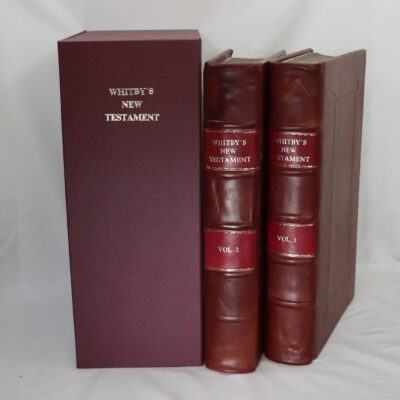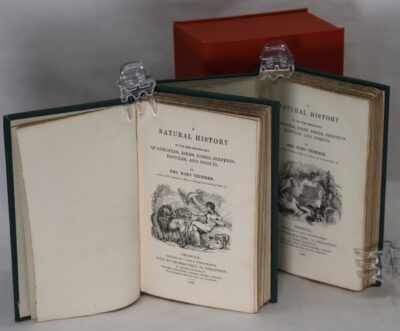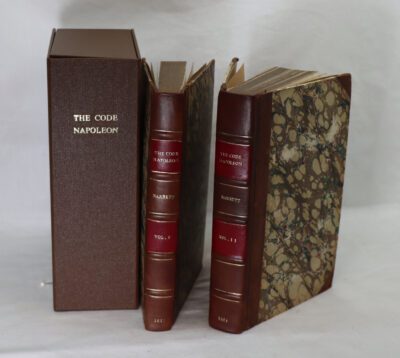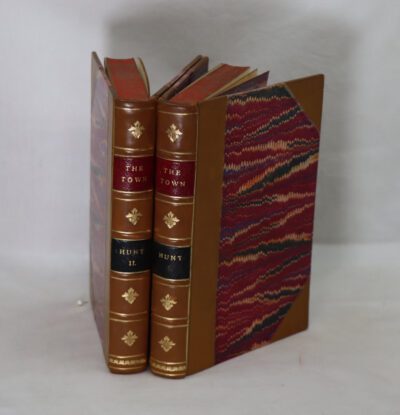Citizens. Two volume Box.
By Simon Schama
ISBN: 9784503705327
Printed: 2004
Publisher: The Folio Society. London
| Dimensions | 19 × 27 × 7.5 cm |
|---|---|
| Language |
Language: English
Size (cminches): 19 x 27 x 7.5
Condition: Fine (See explanation of ratings)
Item information
Description
In a matching fitted box. Black cloth spine with gilt and red title. Red ‘silk’ boards boards.
F.B.A. provides an in-depth photographic presentation of this item to stimulate your feeling and touch. More traditional book descriptions are immediately available.
This superb history of the French Revolution shows France infatuated with novelty and technology and in the midst of dramatic economic change. At the heart of the account is the transformation from subjects to citizens. They are lawyers, priests, professional men and even nobles with a faith that they can make a new France. But this euphoric vision turns sour. This work marks a return to the historical tradition of the epic narrative.
The French Revolution was a period of radical political and societal change in France that began with the Estates General of 1789 and ended with the formation of the French Consulate in November 1799. Many of its ideas are considered fundamental principles of liberal democracy, while phrases like liberté, égalité, fraternité reappeared in other revolts, such as the 1917 Russian Revolution, and inspired campaigns for the abolition of slavery and universal suffrage. The values and institutions it created dominate French politics to this day.
Its causes are generally agreed to be a combination of social, political, and economic factors, which the Ancien Régime proved unable to manage. In May 1789, widespread social distress led to the convocation of the Estates General, which was converted into a National Assembly in June. Continuing unrest culminated in the Storming of the Bastille on 14 July, which led to a series of radical measures by the Assembly, including the abolition of feudalism, the imposition of state control over the Catholic Church in France, and extension of the right to vote.
The next three years were dominated by the struggle for political control, exacerbated by economic depression and civil disorder. Austria, Britain, Prussia and other external powers sought to restore the Ancien Régime by force, while many French politicians saw war as the best way to unite the nation and preserve the spirit of the revolution by exporting it to other countries. These factors resulted in the outbreak of the French Revolutionary Wars in April 1792 and proclamation of the French First Republic in September, followed by the Execution of Louis XVI in January 1793.
The Paris-based Insurrection of 31 May – 2 June 1793 replaced the Girondins who dominated the National Assembly with the Committee of Public Safety, headed by Maximilien Robespierre. This sparked the Reign of Terror, an attempt to eradicate alleged “counter-revolutionaries”; by the time it ended in July 1794, over 16,600 had been executed in Paris and the provinces. As well as its external enemies, the Republic faced internal opposition from both Royalists and Jacobins and in order to deal with these threats, the French Directory took power in November 1795. Despite a series of military victories, many won by Napoleon Bonaparte, political divisions and economic stagnation resulted in the Directory being replaced by the Consulate in November 1799. This is generally seen as marking the end of the Revolutionary period.
Sir Simon Michael Schama CBE FBA FRHistS FRSL (born 13 February 1945) is an English historian specialising in art history, Dutch history, Jewish history, and French history. He is a University Professor of History and Art History at Columbia University.
He first came to public attention with his history of the French Revolution titled Citizens, published in 1989. In the United Kingdom, he is perhaps best known for writing and hosting the 15-part BBC television documentary series A History of Britain broadcast between 2000 and 2002. Schama was knighted in the 2018 Queen’s Birthday Honours List.
Want to know more about this item?

Share this Page with a friend














